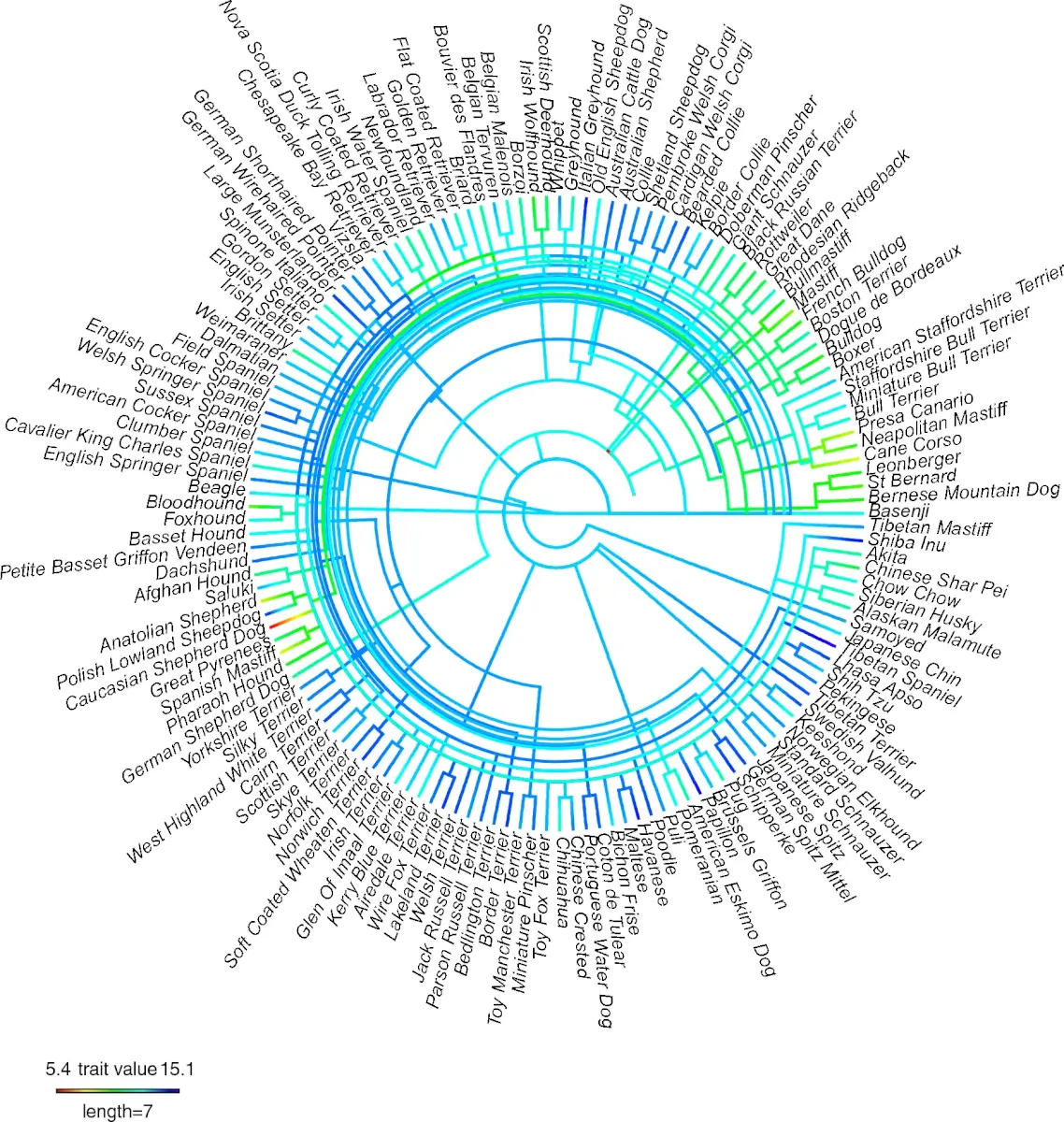LONDON — For many, dogs are treasured family members offering companionship for life. Yet their shorter lifespans compared to us humans invariably mean saying painful goodbyes too soon. Now new research arms owners, vets and even breeders with tailored estimates of anticipated longevity across over 150 breeds. This promises to help all dog lovers better plan for their pups’ futures.
Previously, aggregate estimates suggested an average dog life expectancy of 10-13 years. But substantial variation between breeds has long been apparent anecdotally. British researchers utilized medical records, breed registries, and pet insurance data, and more from over 584,000 UK dogs, confirming a wide longevity range in numbers – from just over 5 years to around 15.
Certain breed differences align with prior assumptions. Giant breeds – Mastiffs, St Bernards – live notably shorter lives, whereas tiny terriers flaunt surprising longevity. Nevertheless, these insights enable better framing of expectations when committing to any pup, while highlighting breeds facing heightened health hurdles.
Study lead author and Dogs Trust research specialist Kirsten McMillan compiled data from 18 sources, including animal shelters, insurance companies and veterinary clinics. This yielded longevity statistics for 155 breeds after the researchers accounted for the censorship effect – namely, that records inevitably included dogs still living at the time of analysis.

Purebreeds ranged from a median life expectancy of 5.4 years for the Caucasian Shepherd Dog up to 15.4 years for the Lancashire Heeler. Crossbreeds as a population settled between at around 12 years. But extreme caution is advised against assuming crossbreed hardiness. The diverse grouping includes both purposeful hybrid pairings of purebreds like Labradoodles along with random mixed lineages. So heterogeneity likely obscures subtler lifespan patterns among this collective.
The most influential factor on longevity emerged as adult body size, with breeds clustered as small, medium, and large. The team also categorized purebred dogs based on head shape, including brachycephalic (short-nosed), mesocephalic (medium-nosed), and dolichocephalic (long-nosed). Small, long-nosed breeds (like Miniature Dachshunds and Shetland Sheepdogs) show the highest average life expectancy at 13.3 years. In contrast, medium-sized, flat-faced breeds exhibit the shortest lifespans, with male dogs living an average of 9.1 years and females slightly longer at 9.6 years.
Consider the English Bulldog or French Bulldog – icons of bugling-eyed, nose-scrunched cuteness. Despite surging popularity as pets and prominent breed status, their median life expectancy fails to hit 10 years. Yet relative newcomers e.g., the Papillon regularly reach 15. Responsibly scaling back extreme morphologies through informed breeding therefore offers a possible prescription for restoring small-faced dog breed longevity (and not incidentally, animal welfare too).
For a more familiar perspective, popular breeds like Labradors, Jack Russell Terriers, and Cavalier King Charles Spaniels have average life expectancies of 13.1, 13.3, and 11.8 years, respectively.
Surprisingly, the study also reveals that purebred dogs generally live longer than crossbreeds, with an average life expectancy of 12.7 years compared to 12.0 years for mixed breeds.
The researchers caution that these results primarily reflect the situation of dogs in the U.K. Also, they define crossbreeds strictly as dogs not recognized as purebreds by kennel clubs. They propose that future studies should separately analyze “designer breeds” like Labradoodles and Cockapoos, which may exhibit different genetic diversity compared to traditional mongrels.
Links between sex and longevity also surfaced in the data. Females outlasted males by roughly 4 percent across pure and mixed breeds alike. Experts aren’t exactly sure why, but across species females often sport survival edges thanks to lower risk-taking and less demanding reproductive investments. For humans, the difference exceeds females outliving males by almost 10 percent.
The study also found spaying erases, if not reverses the advantage according to past studies (this analysis omitted neuter effects due to inconsistencies in available data). Shelters and charities in particular overwhelmingly spay females before rehoming, likely masking wider natural sex gaps.
Ultimately, dogs bless us with their wholehearted zest for life unconditionally. We owe them informed, caring choices in return. These newly quantified lifespan estimates promise to aid the journey through better appreciating our dogs’ mortality. May that perspective translate into treasuring each moment we shar
The findings are published in Scientific Reports.
